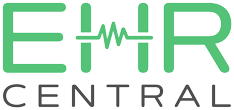Lung Cancer Awareness – Symptoms, Stages and Treatment
There are roughly five different forms of lung cancer from Small Cell to Adenocarcinoma. The type depends on the kind of cell overgrowth involved. Early screening can reduce the mortality rate significantly.

Recognizing the signs of lung cancer can be challenging and often misleading. This is the second most common type of cancer in both men and women and a leading cause of death accounting for 25% of the total cancer deaths. While observing November as the Lung Cancer Awareness Month, I wish to ensure that every individual is aware of the risks, symptoms and possible treatments of lung cancer.
The symptoms remain identical in most patients. Besides the usual persistent cough with or without blood, shortness of breath, and wheezing there is weight loss, chest pain, and hoarseness of voice at times. Other infrequently occurring symptoms include weakness and nausea or vomiting.
Though there are other causes of chest pain too.
Smoking being one of the major causes triggering lung cancer consistently reminds us to quit or avoid it regardless of how long it has been since you started it.
Risk factors for Lung Cancer include:
- Smoking is the reason behind approximately 80% of cases. Secondhand smoke also increases the risk significantly.
- Poor ventilation and inappropriate cooking methods also cause lung cancer.
- Family history and genetics give rise to 8-14% of the total cases.
- COPD or decreased lung function caused by diseases like TB.
- Radon, asbestos, or Pollution exposure.
Types and Stages of Lung Cancer
There are roughly 5 different forms of lung cancer from Small Cell (making 15-20% of the total lung cancer cases) to Adenocarcinoma of the lung. The type depends on the kind of cell overgrowth involved.
Also Read: Types, Symptoms and Screening of Intestine Cancer
Each of the four stages of lung cancer is determined by how far it is spread.
Stage 1: Development of cancer inside lungs
Stage 2: Growth outside lungs infecting lymph nodes
Stage 3: Spread up to the lymph nodes located in the middle of the chest
Stage 4: Both lungs and nearby organs are infected
Signup today and find a doctor near you
Diagnosis
The diagnosis starts with a Chest x-ray, Low Dose Ct scan of chest, and Sputum testing. Advanced testing includes biopsy or Bronchial lavage where a needle or washing is used to examine the pieces of tissues. Once these tests confirm occurrence of lung cancer, the bones and lymph nodes are examined to determine the extent of cancer spread.
Treatment
The treatment is based on the overall health, type of cancer, and the stage of cancer.
A combination of surgery (removal of lung tumor / lymph nodes), Radiation treatment, or Chemotherapy may be used. Certain type of sterotactic Radiotherapy may be used to use intense radiation locally in one area. Targeted drug therapy can also be used for advanced cancer or recurrent cancers.
A newer approach for treatment of lung cancer requires immunotherapy where patient’s immune system is used to fight the cancer.
Also Read: Breast Cancer Awareness: Early Screening Saves Lives
Preventive Measures to Avoid Lung Cancer?
- Stop Smoking. Many smokers wrongly carry the perception that it is too late for them to reduce the risk by smoking cessation and that they are going to get lung cancer anyway. While this is partially true since the risk grows as one delays quitting smoking, the risk reduces by 50% if you stop at earlier age. Unfortunately, the risk increases further if there is a family history of lung cancer of COPD. Thus, it is advisable to quit smoking and minimize the risk as a result.
- Increase physical activity to keep lungs healthy.
- Avoid other health problems like high cholesterol, Diabetes and High blood pressure.
- Eat healthy fruits and vegetables to strengthen your immune system.
- Get screened especially when you notice cough with blood, shortness of breath, or chest pain. Rapid and unusual weight loss coupled with any of the above symptoms are telltale signs of lung cancer development.
- Low dose CT scan detects smaller cancers earlier and can minimize the need for surgery.
Around 0.2 million Americans are expected to get infected by lung cancer by the end of 2020 while survival rate is estimated at only 31%. It is immensely crucial for every individual to have sufficient lung cancer awareness so that they can act sooner. Over half of the patients die within a year of diagnosing the disease. Early screening can significantly reduce the mortality rate.
You can schedule a remote doctor visit to see a doctor online and share the symptoms so that the doctor can recommend if diagnosis is required or not.





